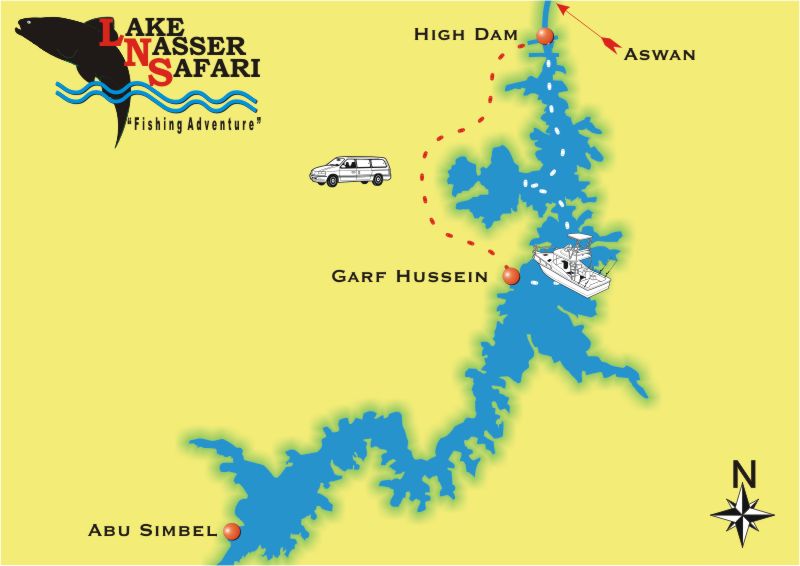|
Lake Nasser (Arabic: Buhayrat Nasir) is a vast
artificial lake in southern Egypt and northern Sudan. Strictly,
"Lake Nasser" refers only to the much larger portion of the lake
that is in Egyptian territory (83% of the total), with the
Sudanese preferring to call their smaller body of water Lake
Nubia.
It was created as a result of the construction of the Aswan High
Dam across the waters of the Nile between 1958 and 1970.
The lake is some 550 km long and 35 km across at its widest
point, which is near the Tropic of Cancer. It covers a total
surface area of 5,250 km² and has a storage capacity of some 157
km³ of water.
|
 |
|
Nasser Lake, c.1,550 sq mi (4,010 sq km), on the
Nile River, SE Egypt and N Sudan. Created in the 1960s, it
extends c.350 mi (560 km) behind Aswan High Dam, submerging the
more southern second and third cataracts. Lake Nasser averages
c.6 mi (10 km) in width and is 600 ft (1,000 km) deep in places.
The lake's rising waters forced more than 80,000 Nubian people
to relocate and submerged many historic sites. Flooding is a
perennial problem.
The rising waters of the dam required major relocation projects
that were carried out during the 1960s. Several important
Pharaonic archaeological sites were dismantled block by block
and moved to higher ground, most notably Abu Simbel; the
Sudanese river-port and railway terminal of Wadi Halfa was lost
beneath the waters and a new town was built in its place; and
Egypt's entire Nubian community from the upper reaches of the
Nile – numbering several hundred thousand people – saw their
villages disappear and were forced to relocate.
The Egyptian name is in honor of President Gamal Abdel Nasser,
who was the mastermind behind the controversial High Dam
project.
The purpose of the lake is all centered around Egyptian
interests, even if so large parts of it lies inside Sudan. Its
water is used for hydroelectricity production, fishing, and
irrigation. With Lake Nasser the water level of the Nile beneath
Aswan is now regulated all the year through, while there were
seasonal floods before. Due to this, 3,300 km² of new land have
come under irrigation. Fish has been set out in the lake, and
there have been a few modest attempts of land reclamation along
the lake's shores.
|